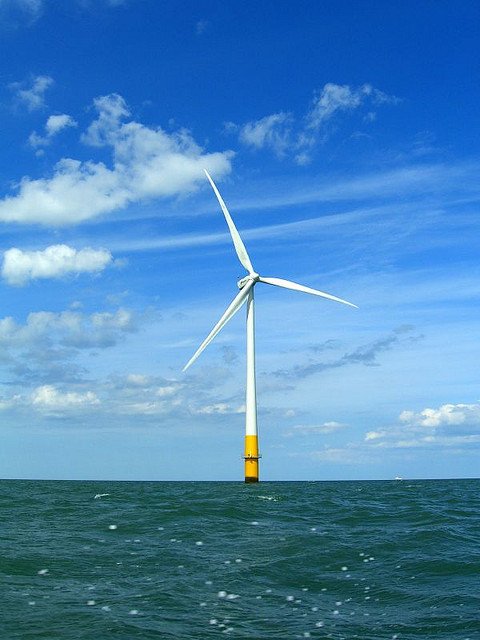The Brayton Point coal plant is shutting down, and that’s a really positive development for a whole lot of reasons.
The new owners of the Somerset, MA, plant let it be known this week that they’d be shutting down Brayton Point by 2017. For the many community members and organizations that have worked for this goal for years, it’s a cause for celebration. But it’s also a great thing for the public at large.

Brayton Point in (somewhat) cheerier times [Credit: Mr. Ducke (http://www.flickr.com/photos/dippy_duck/)]
- Less carbon. Brayton Point is the largest coal plant in New England, and, until its recent decline, was the largest “point source” of carbon pollution in the region. If the electricity increasingly comes from zero-carbon resources like solar and wind instead, closing the plant avoids the millions of tons of CO2 that it used to emit each year.
- Less coal waste and other bad stuff. While burning coal is a major contributor to climate change, coal generation carries a lot of other environmental baggage, too. And despite big recent investments in pollution control systems, Brayton Point “still tops the list of sources of toxic releases”— mercury, arsenic, lead, and more — in Massachusetts.
- Healthier water. Brayton Point has been a subject of concern over many years not just because of its climate impacts, but also because of its direct water impacts. The plant added cooling towers recently to deal with the problems caused by withdrawing large quantities of water (close to a billion gallons per day in 2008, in Brayton’s case) and putting it back much hotter. But that still leaves the plant pulling in (and evaporating) millions of gallons per day. And there are also the water impacts of getting coal in the first place.
- More renewables. Taking a large polluting plant like Brayton Point off the rosters can create more of a market for new clean energy resources. In 2012, windpower — not coal, nuclear, or even natural gas — was the largest source of new capacity in the country. Renewables are well positioned to be a substantial part of the region’s energy picture.
- More transmission (without new transmission!). Transmission constraints have been an issue in Southeastern Massachusetts for a long time, and a challenge to adding new (clean) resources to serve Massachusetts and New England. Taking Brayton Point offline not only creates demand for renewables, it also makes more room in the grid for them. As it happens, that region is home to important projects that are looking to take advantage of the tremendous offshore wind resources near Cape Cod and south of Massachusetts and Rhode Island.
- A stronger spotlight on the economics of coal. Brayton Point stands as a warning about the diminishing viability of coal in general. While others have pointed to the plant’s vulnerabilities, it was not one of the coal plants that UCS identified as “economically vulnerable” in its recent “Ripe for Retirement” analysis, based on the cost of power from a given power generator if it were upgraded with the necessary pollution control equipment. But Brayton Point serves as a strong example of the risks that UCS has been pointing to for years— i.e., the perils of investing good money into old plants, in ways that still don’t deal with the full range of problems. The “new wine in old wineskins” approach to energy infrastructure, this news reaffirms, just doesn’t cut it.
High on the list of considerations for the energy sector are (or should be) jobs. Direct losses because of decisions like this are important to note, and really hard to take when they’re hitting you directly. And it’s something UCS has focused on in a range of contexts, as in this recent forum on the future of West Virginia.

A vision of the sunnier future [Credit: phault (http://www.flickr.com/photos/pjh)]
That potential is visible just 20 minutes east of Brayton Point, where the first-in-the-nation marine commerce terminal for supporting offshore wind is coming into shape in New Bedford.
A future worth celebrating
The challenge ahead, then, isn’t just to deal with the physical infrastructure — the buildings, the industrial residues, the 500-foot-tall cooling towers. It’s also to figure out how a community overcomes its dependence on a single corporate entity and the generations of employment it has provided.
That’s a piece of unfinished business for the owners of Brayton Point, Energy Capital Partners, as their CEO has acknowledged. As Sylvia Broude, executive director of Toxics Action Center, put it: “Somerset can be a model for other coal communities in New England to shift away from archaic dirty energy” and towards clean technology.
We can celebrate the many gains that Brayton Point’s closing brings. And celebrate even more when we’ve helped all communities move toward a brighter, cleaner energy future.
